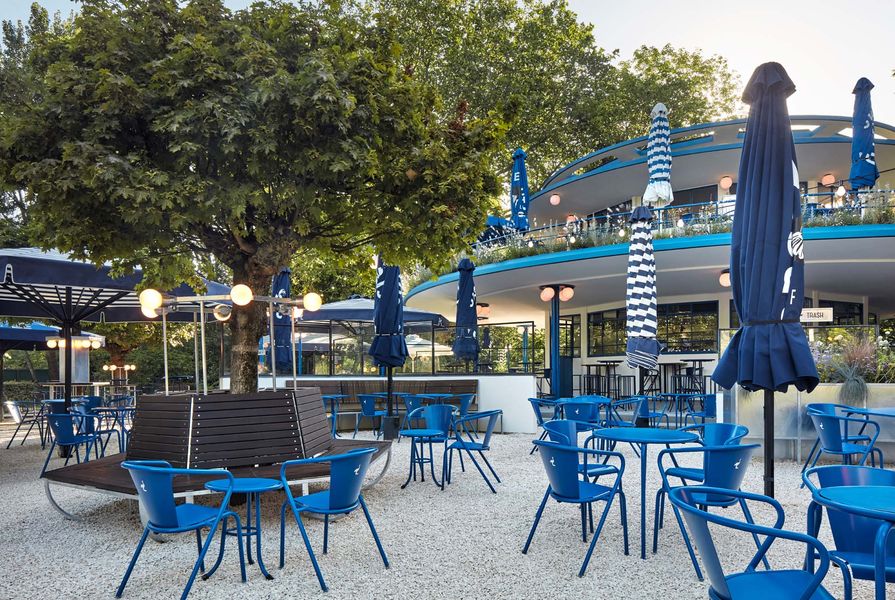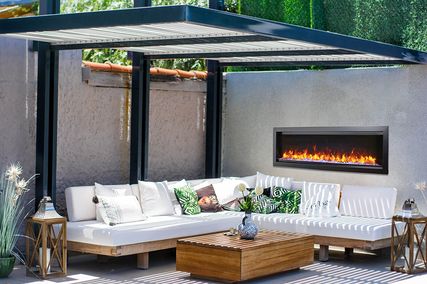For Esther Stam, founder and creative directure of Amsterdam-based interior architecture studio Studio Modijefsky, good hospitality design happens when there is successful cross-pollination from the get-go between everyone involved in establishing a bar, restaurant or café. Ahead of an appearance in Melbourne at the Eat Drink Design Talks half-day conference at the National Gallery of Victoria on 12 November, Stam spoke to ArchitectureAU about designing a destination, rather than a venue.
How do you personally measure success in hospitality design?
That it is visited, of course! Not only the first, most hyped-up months, but also after being the “ next best thing.” Secondly, I would say it needs to work logistically – that the traffic flows are sound and people are happy working there. The same goes for visitors – the space needs to lead people in a natural way.
Besides that, I think a couple more things are important. The design needs to survive certain “un-aesthetic” design choices or interferences made by the owner when in use; it needs to be that strong that appliances or small adjustments won’t effect the interior and spatial experience as a whole. Another big achievement is when a designed venue becomes one of the icons of the city. Whether right in the center or in the outskirts, people are willing to make the extra mile, or are willing to get on their bikes to travel that extra 20 minutes to discover it. And it becomes a second home for regulars. And last but not least, that a design is copied.
The Commons by Studio Modijefsky.
Image: Maarten Willemstein
To what extent does, or should, design shape or inform the final hospitality “product”? How total or encompassing should the involvement of the interior architecture practice in question be?
I believe that the more involved we are from the very beginning, the better. In the end interior design is always part of a bigger picture. Working together with people that are responsible for other components and therefore have a different approach, bringing different things to the table, creates cross-pollination. These different perspectives generate creativity and can take the design to the next level. The interior concept can evoke ideas for ways of serving or brand identity, music or even what is served and this way help define the hospitality concept. And the interior design can be influenced by the space when it isn’t completely stripped or clean as well, so to see it and be able to react on rough sketches and ideas is very much encouraged. In the end, the interior is where it all takes place. Even when offering all the stage to the product, and the interior design is very subtle or even almost absent – this is a design too.
Design is the theatre where the play is performed, and this is all part of a total experience. The space should complement the product and the product should add something to the space. It’s an interaction between the two. And when well designed and well executed, with a clear concept in the beginning, I think this can be achieved and can work so well. For example - the story of fish is told in the interior of Visaandeschelde, a fine dining fish restaurant in Amsterdam. Or the beer brand Brouwerij ’t IJ fits so well in the interior of Blauwe Theehuis, because their brand identity, products and even mentality are integrated in a very subtle way in the design.
The Commons by Studio Modijefsky.
Image: Maarten Willemstein
Digital technology is having a pronounced effect on the way hospitality is delivered and how it is experienced. To what extent should this be considered by designers? Is the idea of the highly “Instagrammable” space a distraction from good design, or does it represent an opportunity?
In the end our designs are spatial experiences, and we design an environment for guests to be in. That doesn’t mean I don’t recognize the power of pictures and the great opportunity for people all around the world to get to know a design we made.
I think a picture of a space can also evoke emotions, fantasy and imagination. Sometimes it even becomes a travel destination, and we do have these moments in the studio where we think of what part of the designed space would be photographed or used in what way. Instagram makes people interact in other ways, and also interact with the interior in other ways. Taking a picture of yourself in a surrounding is something different from being there or taking a picture of the environment itself.
Esther Stam.
Image: Studio Modijefsky
Hospitality venues, with some exceptions, are generally closed environments that focus on transporting a guest from the public space into a more isolated, private world. How do you consider this to be apparent, or not, in your own work?
Most of the time we design spaces that are very open for the public, and one of the things we always look at is the relation with outside. How can we involve the outside in the design, and make a connection with this context? We also consider the visibility of the interior from the outside, by creating lights or eye-catchers that are visible from the outside looking in. To me, this is often a dialogue.
Esther Stam will be presenting a keynote at Eat Drink Design Talks on 12 November at the Ian Potter Centre, NGV Australia in Melbourne. See the program and purchase tickets to this half-day hospitality design conference here.



























